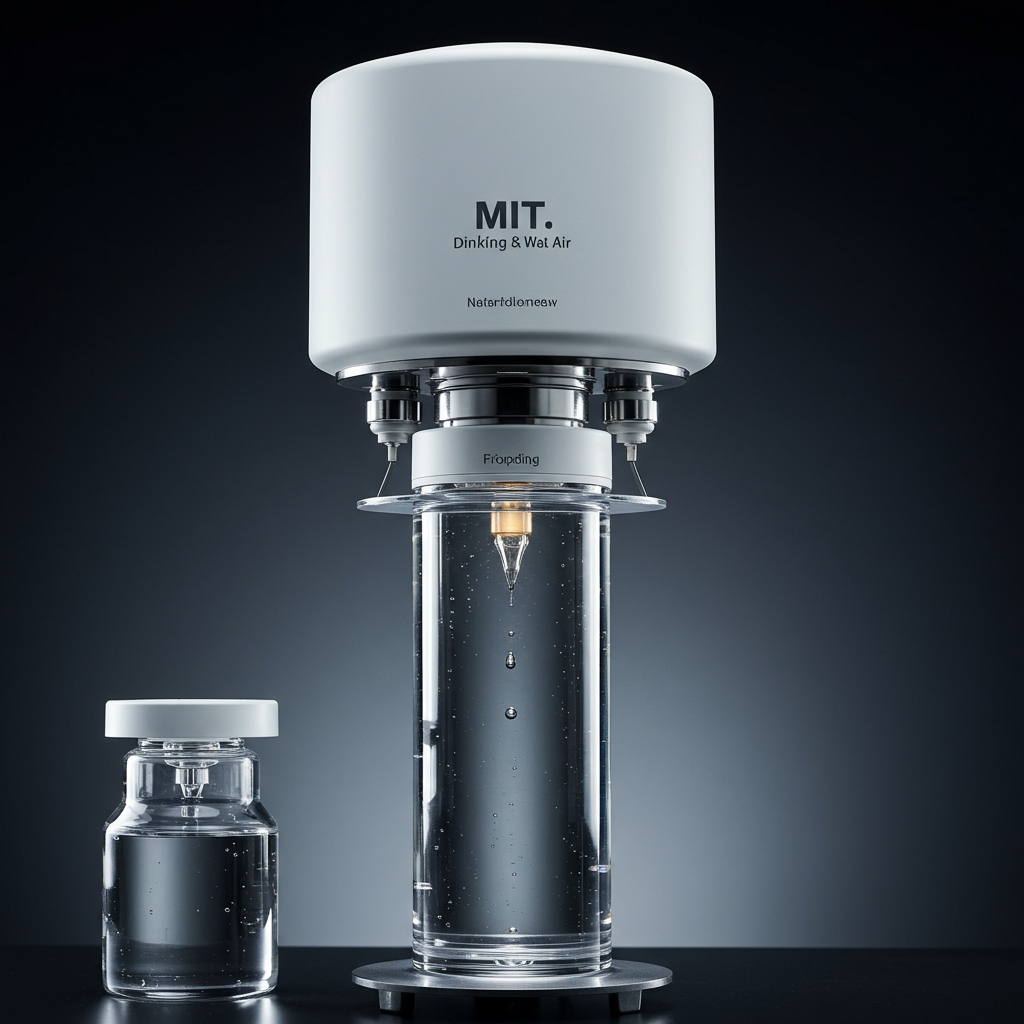Access to safe and affordable drinking water remains a critical global challenge. An estimated 2.2 billion people worldwide lack reliable access to clean water, and even in developed nations like the United States, over 46 million individuals face water insecurity. Traditional water resources are under increasing strain, and complicating matters further, events like wildfires can contaminate existing municipal supplies, as seen in recent advisories in areas like Southern California where chemical contamination, including carcinogens like benzene, has compromised tap water after blazes.
Addressing this urgent need, engineers at MIT have developed a novel solution: an atmospheric water harvester capable of producing fresh, safe drinking water anywhere, powered solely by the environment. This innovation taps into the immense, largely unexploited reservoir of water vapor present in the Earth’s atmosphere, offering a promising alternative to traditional sources, especially in arid or resource-limited regions.
How the Window-Sized Device Works
The newly developed device functions as a passive, window-sized vertical panel. It requires no external power source like electricity, batteries, or even solar panels, setting it apart from many other atmospheric water harvesting technologies.
The core of the system is a specialized water-absorbent hydrogel material. This black, origami-inspired hydrogel is molded into small, dome-shaped structures resembling bubble wrap. Enclosed within a glass chamber coated with a cooling layer, the hydrogel absorbs water vapor from the air, causing its dome structures to swell. When conditions shift (typically with daytime warmth, aided by sunlight warming the glass), the absorbed vapor evaporates out of the hydrogel. As it evaporates, the domes shrink back down. This released vapor then condenses on the cooler glass surface inside the chamber, flowing down to be collected as clean, drinkable water through a simple tube system.
Innovation in Material Science: Ensuring Safe Water
One significant hurdle for some hydrogel-based water harvesters has been the risk of salt contamination in the collected water, particularly when salts are used to enhance the material’s absorption capacity. The MIT team engineered their hydrogel with two key features to prevent this:
- Glycerol Additive: The hydrogel incorporates glycerol, a liquid compound that acts as a stabilizer for salts potentially present, keeping them locked within the gel structure.
- Microstructure Design: The hydrogel’s unique microstructure intentionally lacks nanoscale pores, further inhibiting salt ions from escaping along with the water vapor during the condensation process.
These innovations ensure that the collected water meets safety standards for drinking water, addressing a critical issue faced by other designs that may produce brackish or contaminated water requiring further purification. The dome-shaped surface of the hydrogel also maximizes the area available for absorbing water vapor, boosting efficiency.
Tested in Extreme Conditions: Death Valley Success
To prove its capability in challenging environments, the MIT team deployed a half-square-meter prototype of the device for a week in November 2023 in Death Valley, California – one of North America’s driest regions. The device successfully operated across a wide range of relative humidities, from 21% to 88%. Even in the extremely dry desert air, it consistently harvested between 57 and 161.5 milliliters (about two-thirds of a cup) of drinking water per day. This performance in arid conditions surpassed that of many other passive and some actively powered designs tested in similar dryness, confirming the technology’s potential for water-scarce locations. The researchers note that water production is expected to be even higher in more humid climates.
Scalability and Future Impact
The vertical design of the panels means they have a small footprint, making them highly suitable for deployment in arrays. Researchers estimate that a setup of multiple panels could potentially supply a household with sufficient drinking water daily, even in dry desert environments.
Published in the journal Nature Water, this technology represents a significant step towards providing decentralized, safe, and sustainable access to drinking water. While the Death Valley test provided promising results from a one-week deployment, experts like Daryl Williams at Imperial College London note the importance of longer-term testing (e.g., over several months) to fully assess the device’s durability and performance under prolonged outdoor stress conditions.
MIT Professor Xuanhe Zhao and lead author “Will” Chang Liu, along with their colleagues, see this meter-scale device as a crucial proof-of-concept for scalability. They are working on optimizing the hydrogel material further and envision deploying these passive water harvesters in resource-limited regions worldwide, offering a simple yet powerful way to tap into atmospheric water and deliver clean water where it’s needed most.




